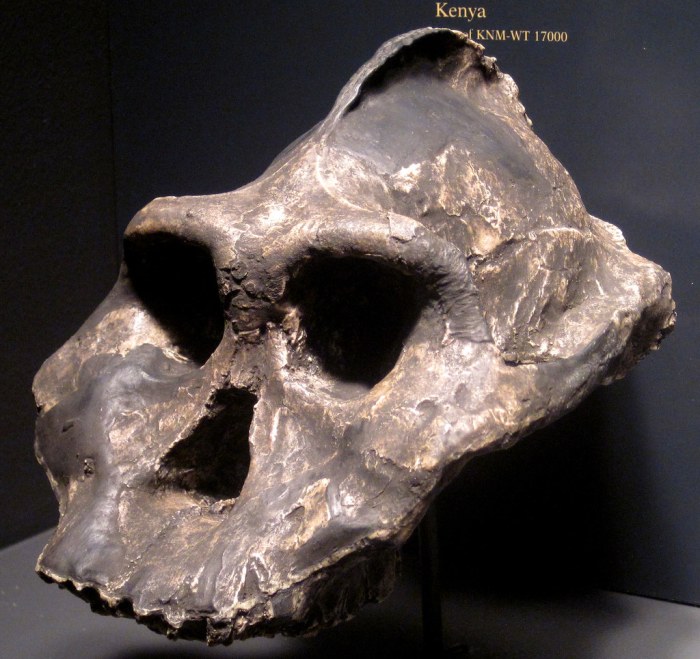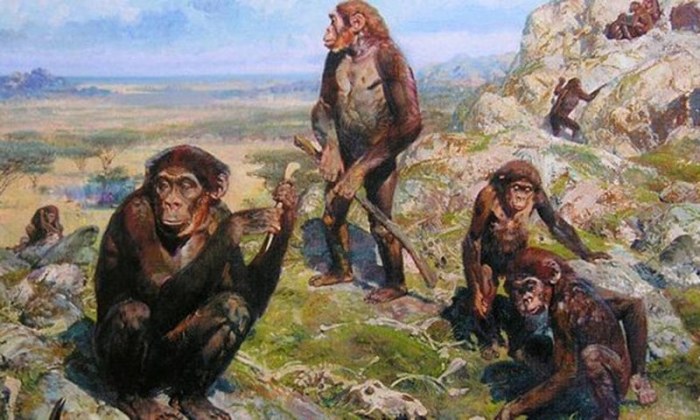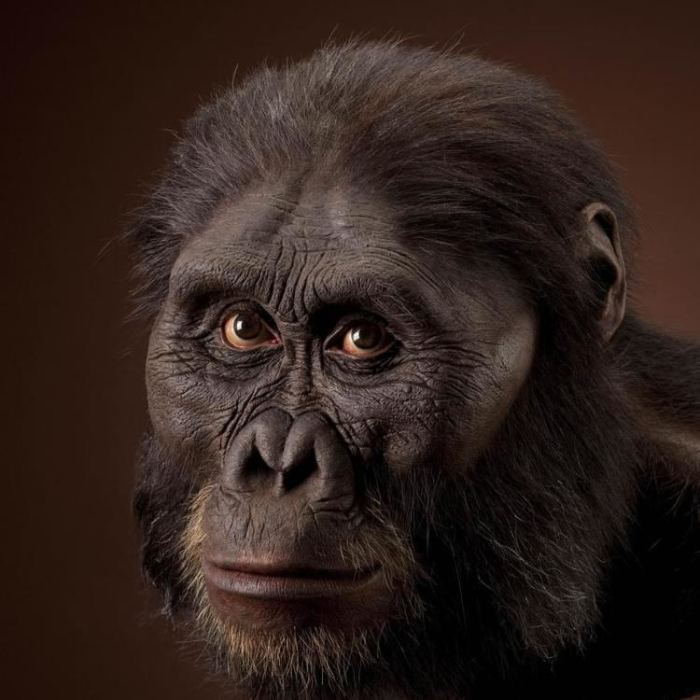Identify the statements that correctly describe australopithecus platyops – In this exploration of the statements that correctly describe Australopithecus platyops, we embark on a captivating journey into the depths of human evolution, uncovering the distinctive characteristics and evolutionary significance of this enigmatic hominin species.
Australopithecus platyops, a pivotal figure in the hominin family tree, has captivated researchers with its unique physical features, dietary habits, and social dynamics. As we delve into the fossil record, we will unravel the mysteries surrounding this ancient species, gaining insights into the origins and diversification of the human lineage.
Taxonomy and Discovery: Identify The Statements That Correctly Describe Australopithecus Platyops

Australopithecus platyops is classified within the hominin family tree as a member of the genus Australopithecus, which is closely related to the genus Homo. It is believed to have evolved from an earlier hominin species, Australopithecus anamensis, and gave rise to later hominin species, such as Australopithecus afarensis and Paranthropus boisei.
The discovery of Australopithecus platyops fossils dates back to the 1970s when fragments of a cranium and mandible were found at the site of Kanapoi in Kenya. Subsequent excavations at the site yielded additional fossils, including postcranial remains, which provided valuable insights into the physical characteristics and behavior of this hominin species.
Physical Characteristics

Australopithecus platyops exhibited a distinctive combination of physical features that set it apart from other hominin species. The cranium was relatively small and flat, with a prominent brow ridge and a receding forehead. The dental morphology was characterized by small, incisors, large molars, and thick enamel, suggesting a diet that included both hard and soft foods.
The postcranial skeleton of Australopithecus platyops showed adaptations for bipedalism, including a pelvis that was broad and short, and long, slender legs. The feet were arched and had a grasping big toe, which suggests that Australopithecus platyops may have spent time in trees as well as on the ground.
Diet and Behavior
Based on the analysis of dental microwear and stable isotope ratios, it is believed that Australopithecus platyops had a varied diet that included both plant and animal foods. The presence of microwear on the teeth suggests that they consumed hard foods, such as nuts and seeds, while the stable isotope ratios indicate that they also consumed fruits, leaves, and possibly small animals.
Little is known about the social behavior of Australopithecus platyops, but it is hypothesized that they lived in small, family groups. The presence of multiple individuals at the Kanapoi site suggests that they may have had some form of social organization and cooperation.
Habitat and Distribution
Fossils of Australopithecus platyops have been found in eastern Africa, primarily in the regions of Kenya and Ethiopia. These areas were characterized by a mosaic of habitats, including woodlands, grasslands, and riverine environments. It is believed that Australopithecus platyops preferred habitats with access to water and diverse food sources.
The distribution of Australopithecus platyops fossils suggests that it had a relatively wide range, possibly extending from the Rift Valley in Kenya to the Omo Valley in Ethiopia. However, the exact factors that influenced its habitat selection and range are still not fully understood.
Evolutionary Significance

Australopithecus platyops is considered an important species in human evolution as it represents a transitional form between earlier hominin species and later, more advanced species. Its physical characteristics and behavior suggest that it was well-adapted to its environment and played a role in the diversification of the hominin lineage.
The study of Australopithecus platyops contributes to our understanding of the origins and evolution of the human species. By examining its fossils and analyzing its diet, behavior, and habitat, we can gain insights into the evolutionary pressures and adaptations that shaped the development of our own species.
FAQ
What is the significance of Australopithecus platyops in human evolution?
Australopithecus platyops holds a crucial position in the hominin family tree, providing insights into the transition from ape-like ancestors to the emergence of more human-like traits. Its physical characteristics and adaptations suggest a pivotal role in the development of bipedalism and the expansion of the hominin lineage.
How did Australopithecus platyops differ from other hominin species?
Australopithecus platyops exhibited a unique combination of primitive and derived features that distinguished it from other hominin species. Its relatively small brain size and robust jaws resembled earlier hominins, while its adaptations for bipedalism and its distinctive dental morphology hinted at more advanced evolutionary developments.